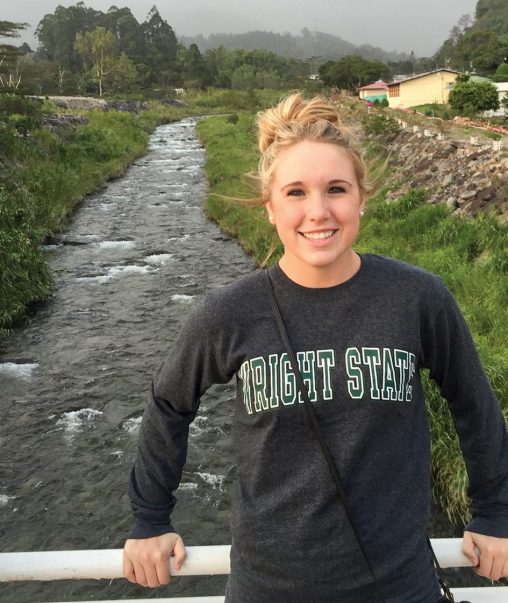
Tiffany Ricketts, a sophomore at Wright State’s Lake Campus and one of the Ohio Farm Bureau’s Young Agricultural Professionals, joined other university students on an agricultural tour of Panama last spring.
Looking out at the Panama Canal, Wright State University agriculture student Tiffany Ricketts was awestruck at the sight before her.
Mega-sized cargo ships carrying thousands of shipping containers were passing through the canal at the rate of about 40 per day. Equally mesmerizing was the thought that grain from Ohio or even her family farm in Mercer and Van Wert counties could be part of the convoy. After all, one of every three rows of the state’s corn or soybeans is exported every year.
“It made me think of the times I’m in the tractor or Dad in the combine harvesting and that our own grain could be going through here,” Ricketts told Our Ohio magazine, a publication of the Ohio Farm Bureau Federation.
Ricketts, a sophomore at Wright State’s Lake Campus and one of the Ohio Farm Bureau’s Young Agricultural Professionals, joined other university students on an agricultural tour of Panama last spring. They visited coffee, horse, orchid and other farms.
“(The trip) gave me a better idea of how things are grown in other parts of the world and how much manual labor can go into our food,” Ricketts said. “It made me want to learn more about agriculture in other countries as well as my own.”
Every year, Ohio farmers travel to other countries either on their own, with universities or with trade and commodity groups to learn more about agriculture. Some go on the trips to learn new or innovative ways to improve and grow their own operations while others travel abroad to learn about international trade or crops not typically grown in the United States.
Greg McGlinch, coordinator of the agriculture program at Lake Campus and member of the Darke County Farm Bureau, visited a red snapper fish farm in Costa Rica last year and saw how U.S. soybeans are used to feed the fish.
“It’s nice to see how the soybeans and corn grown in the U.S. can be used down there to help them be sustainable and protect their environment and use it for a high value crop,” said McGlinch, who also went on the Wright State trip to Panama. “When I go out and harvest soybeans, I have a better understanding of why it’s so important to keep grain clean and focus on the quality to preserve and grow our market share.”
The content of this article was first printed in the March/April edition of Our Ohio magazine, a publication of the Ohio Farm Bureau Federation.

 Wright State University and Premier Health more closely align operations, creating a transformational partnership
Wright State University and Premier Health more closely align operations, creating a transformational partnership  Bottom Line, Wright State partnership aims to increase access to college
Bottom Line, Wright State partnership aims to increase access to college  Wright State’s nursing program celebrates 50th anniversary
Wright State’s nursing program celebrates 50th anniversary  Wright State celebrates Student Success Champions
Wright State celebrates Student Success Champions  Wright State golf team captures 2024 Horizon League team title, Flynn individual champion
Wright State golf team captures 2024 Horizon League team title, Flynn individual champion 